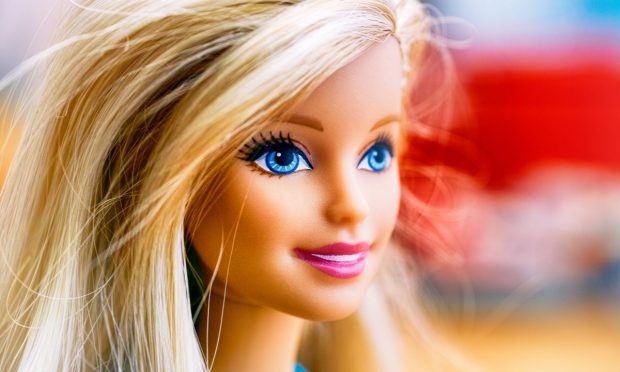Struggling Gap Bets on Nostalgia and Brings Back Barbie

Just last month, Gap reflected on a year of struggle, with numerous net losses, bloated inventory levels and a search for a permanent CEO. In the wake of these challenges, the retailer has been exploring strategies to regain momentum and reconnect with consumers. As part of this effort, Gap has turned to the nostalgia trend, forging a partnership with Mattel.
On Wednesday, Gap revealed that it would be teaming up with Mattel for an apparel collaboration based on the toymaker’s brands. The first collection drop will be based on Barbie and is expected to feature the Barbie branding and Gap’s signature arch typeface through tees, skirts, logo hoodies, denim, button-downs, accessories and pet apparel.
The Gap x Barbie collection is expected to be available May 23 with other Gap x Mattel collections unveiling later in 2023.
The announcement declared that the Gap x Barbie collection embodies the ideals of inclusivity and individuality, which strongly align with the values of Gen Z. Furthermore, the collection coincides with the release of the “Barbie” movie, featuring Margot Robbie and Ryan Gosling.
“We look forward to working together to offer our fans fun, quality clothing for the entire family, plus a new way to embrace their favorite Mattel brands, franchises, characters and stories,” said Josh Silverman, chief franchise officer and global head of consumer products at Mattel.
But Gap isn’t the first to do a Mattel collaboration. In fact, Forever 21 teamed up with Mattel in June 2022 to launch the exclusive Barbie Summer 2022 Collection. The line included clothing, swimwear, sleepwear, accessories, cosmetics and home décor inspired by the Barbie DreamHouse. Over time, various high-end fashion brands, such as Balmain, Moschino, and Karl Lagerfeld, have also created clothing for the iconic doll.
And now it’s become a trend other nostalgic brands are looking to dabble in as they try to find new ways to reach new consumers.
Hopping on the Nostalgia Train
Although these collaborations may seem just cool on the surface, they are far more strategic than they appear.
Just last week, PYMNTS reported that brands like consumer packaged goods (CPG) company Truff and meal subscription company HelloFresh leaned into the nostalgia trend as an innovative way to reach new customers.
The concept is based on the idea that nostalgia is a sought-after commodity for Generation Z, creating a prime opportunity for collaborations like Truff’s team-up with Super Mario Bros. and HelloFresh’s connection with Marvel to appeal to this audience by delivering what they crave (literally).
See also: Food Brands HelloFresh and Truff Tap Nostalgia to Drive Sales
Why Nostalgia Works
Gen Zs have a yearning to immerse themselves in the pop culture and trends of bygone decades, even if they didn’t directly experience them. While all age groups experience nostalgia to some extent, Gen Z is considered the most nostalgic generation, with 15% indicating a preference for reminiscing about the past rather than contemplating the future. Millennials are a close second at 14%, and this preference diminishes as one ages.
Moreover, research indicates that nostalgia in media is predominantly propelled by Gen Z and millennials, with Gen Z spearheading the trend at 50%, followed by 47% of millennials.
And to get these doses of nostalgia, Gen Z is embracing flip phones and digital cameras, and is returning to a more straightforward era, shunning sensory overload. This move not only assists them in reducing overstimulation, but it also enables them to exhibit their uniqueness.
Why Gen Z?
Millennial and Gen Z shoppers are reportedly boosting their monthly fashion budgets by over 26% in order to acquire the brands and luxury items they covet.
“The most surprising part of this is that younger buyers, specifically Gen Z and millennial shoppers, are growing three times faster than other generations as luxury buyers,” said Kristen Gall, president of Rakuten Rewards.
Moreover, on average, Gen Zs initiate their luxury purchases at the age of 15, which is notably earlier than other generations, who entered the luxury market in their 20s.
Brands and retailers of all kinds are increasingly motivated to invest in a cohort of consumers they can grow and build loyalty with.
From Kanye West to Barbie
During Gap’s last earnings call in March, Gap found a glimmer of good news as the company revealed a 21% decrease in inventory compared to the previous year. However, the company’s net sales for the year dropped to $15.62 billion, down from $16.67 billion in the previous fiscal year. Additionally, Gap incurred a net loss of $202 million for the year, in stark contrast to the net income of $256 million in the prior fiscal year.
Due to the unpredictable macroeconomic conditions and the company’s ongoing efforts to implement changes and recruit a new CEO, the company ultimately opted to refrain from providing an outlook. In July, the previous CEO Sonia Syngal resigned unexpectedly, and the company has not found a permanent replacement. In the interim, Bobby Martin, the executive chairman of the retailer, has assumed the role of interim CEO.
During the previous quarter, Gap incurred $53 million in impairment charges when rapper Ye (formerly Kanye West) terminated his contract with the retailer due to alleged contract violations and insufficient creative control. The company removed all Yeezy products from its stores in late October following anti-Semitic comments made by the rapper.
Amidst a flurry of publicity, the partnership was first revealed in June 2020 and was slated to continue for up to a decade, with the potential to generate over $1 billion in yearly sales for Gap. The Yeezy Gap line would include attire for men, women, and children and be advantageous to both parties by bestowing upon Gap a hip image and providing Ye access to the mass market.
While Gap’s collaboration with Ye was cut short, it could have been a lucrative one. Looking ahead, as Gap looks to tap into new shopping trends, only time and the consumer will tell if Gap is relevant.

